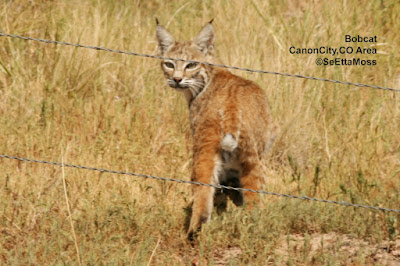Yesterday I drove up to Lake DeWeese to "chase" a very rare bird for Colorado, a Reddish Egret. Though it failed to show-up, I had a very pleasant day. Lake DeWeese is located in the Wet Mountain Valley, a high park that lies at almost 8,000 feet between the very scenic Sangre de Christo Mountains and the Wet Mountains. So the temps were in the low 80's in the afternoon while back in the Canon City area they were in the low 90's. There were good numbers of shorebirds in the mudflats of Lake DeWeese including Least, Spotted, Semipalmated, Baird's and 2 Stilt Sandpipers. There were also Greater Yellowlegs, an Eared Grebe in brilliant Alternate (breeding) Plumage, Western Grebes (as well as Mallards and Canada Geese) with young swimming close behind plus about 2 dozen American White Pelicans. In the grassy fields were Horned Larks, Brewers, Savanannah and Vesper Sparrows including the one in these pics. In the early evening the Vesper Sparrows were living up t...









